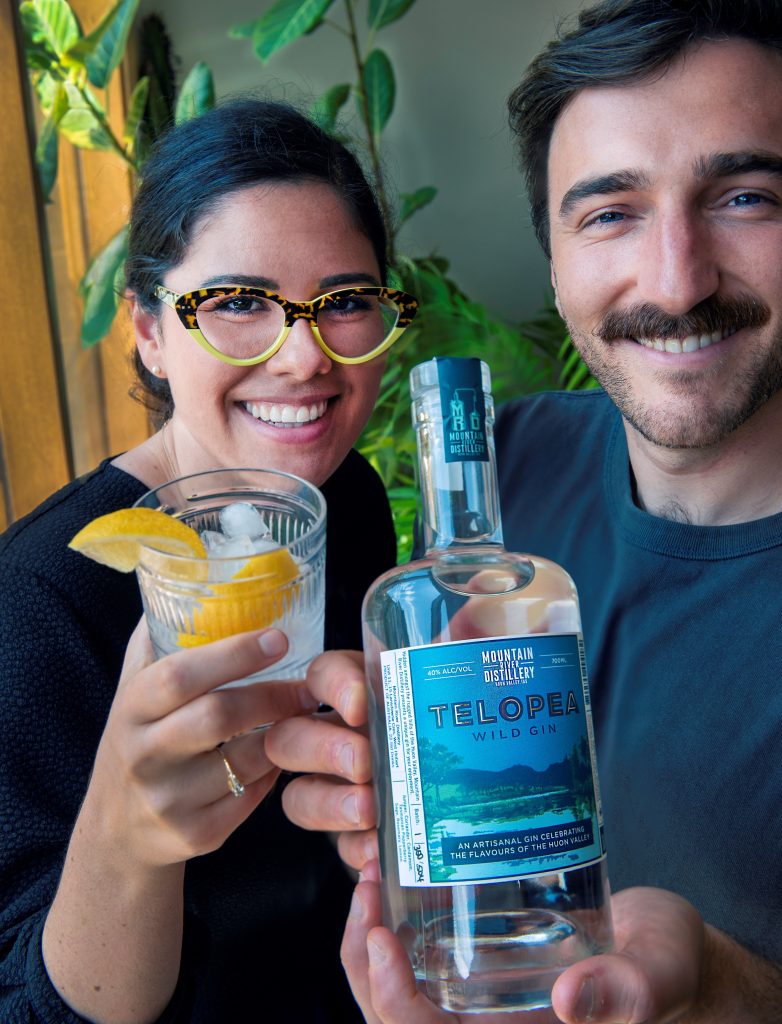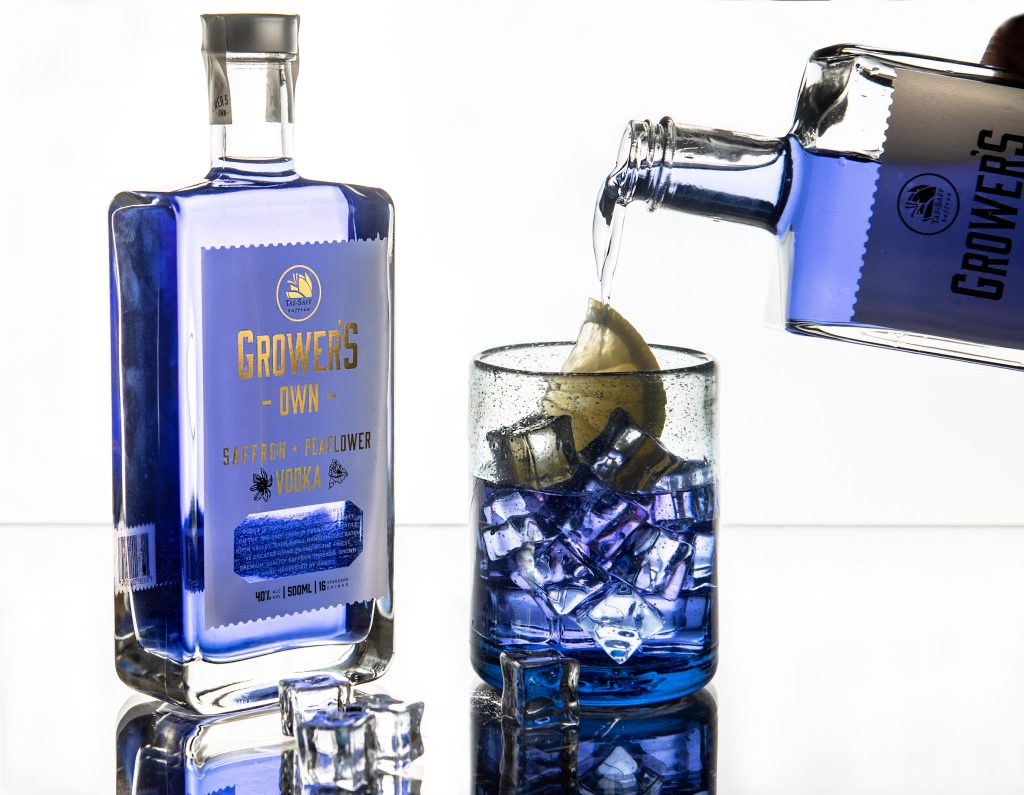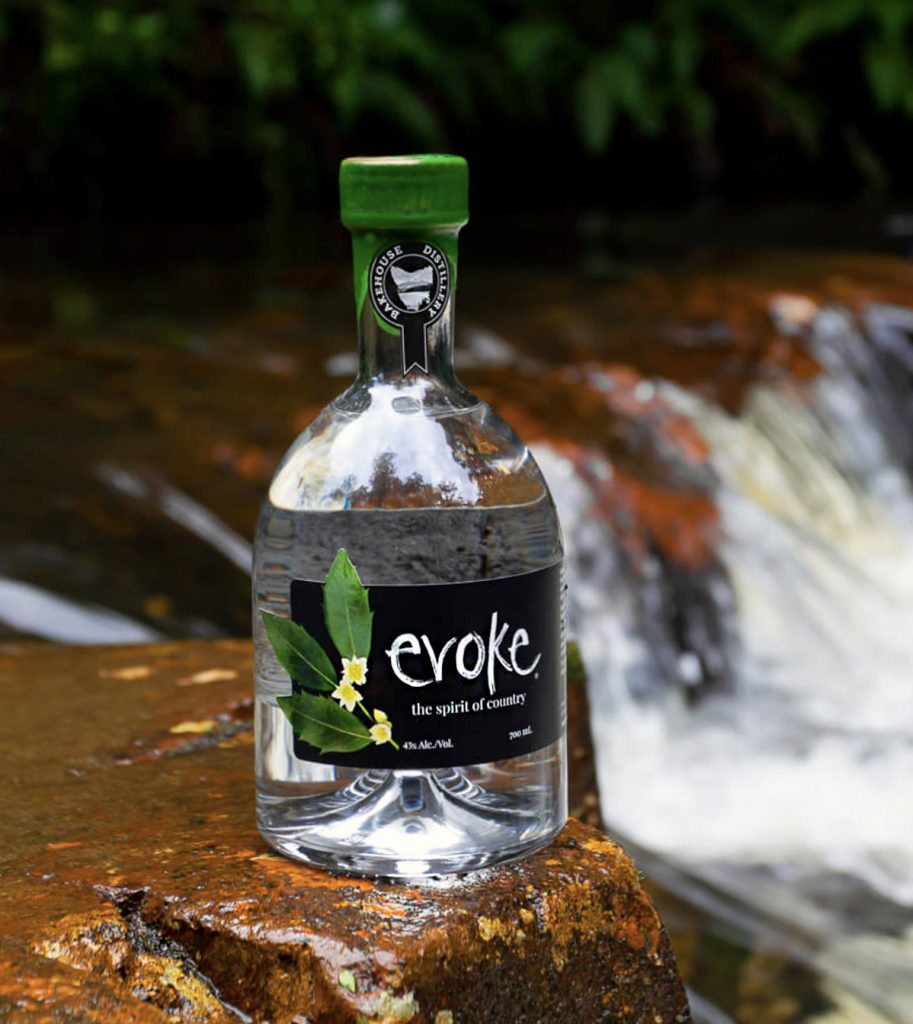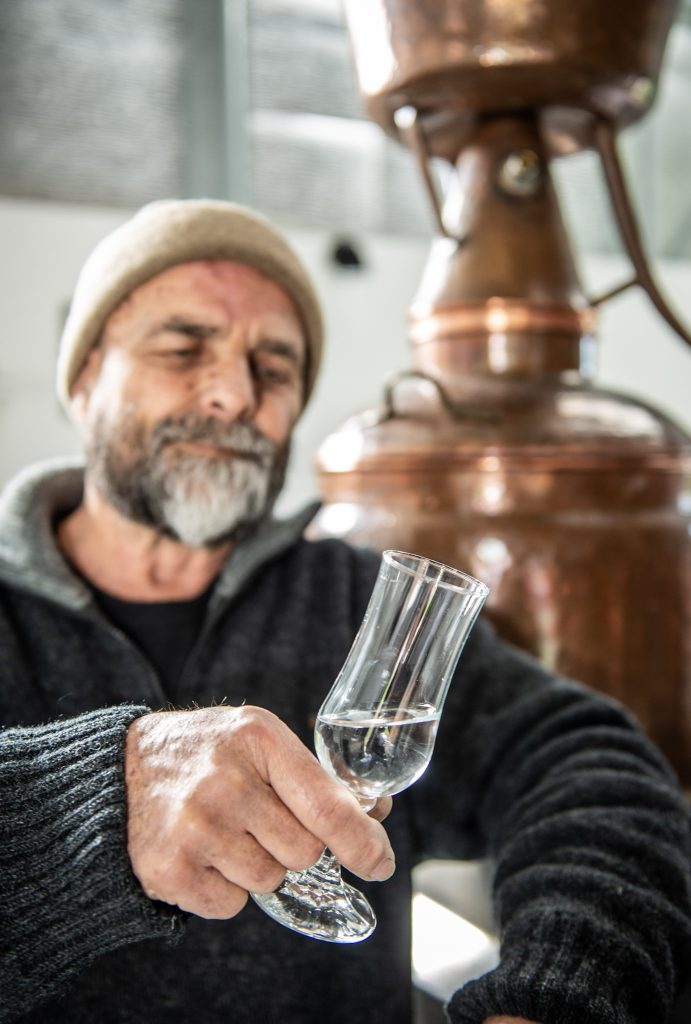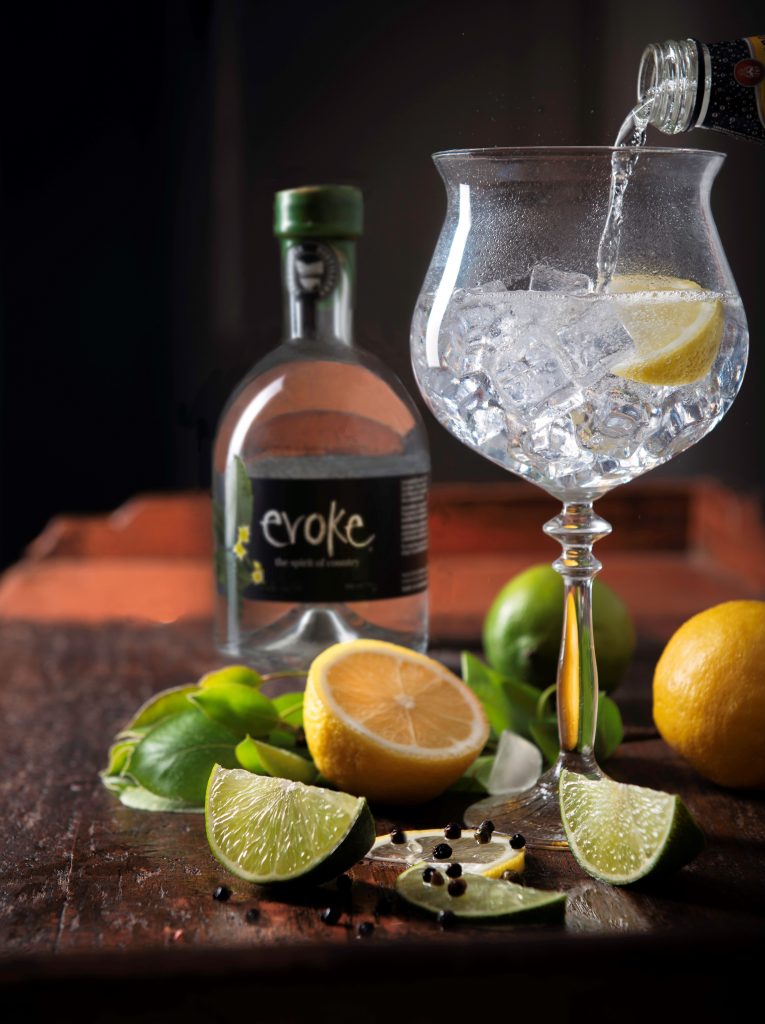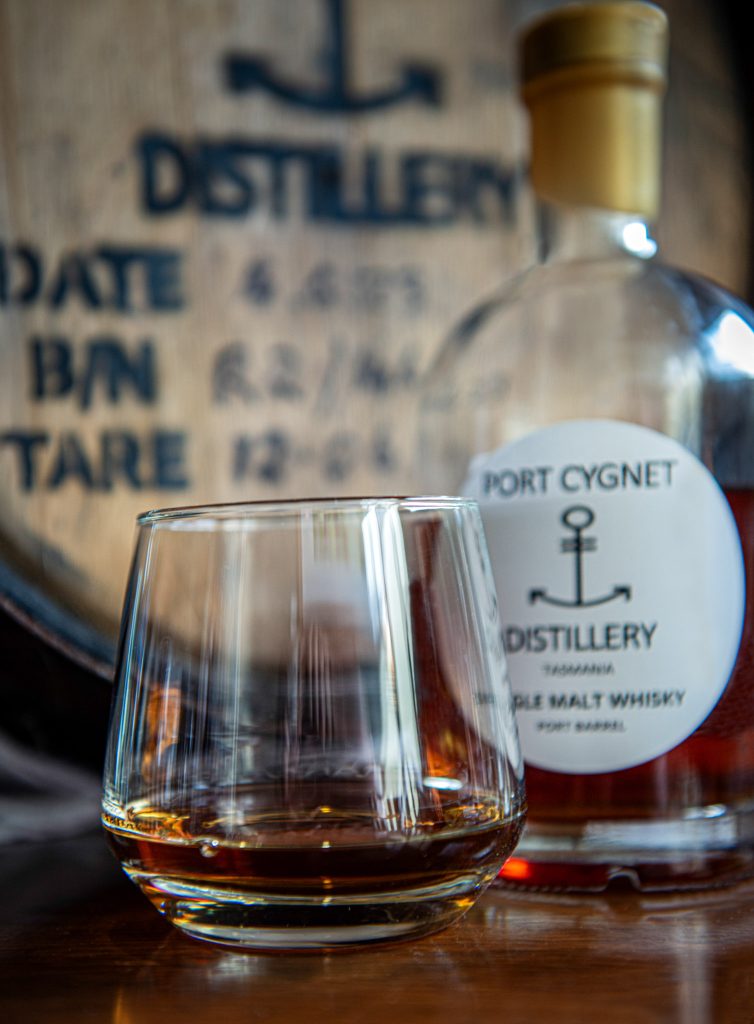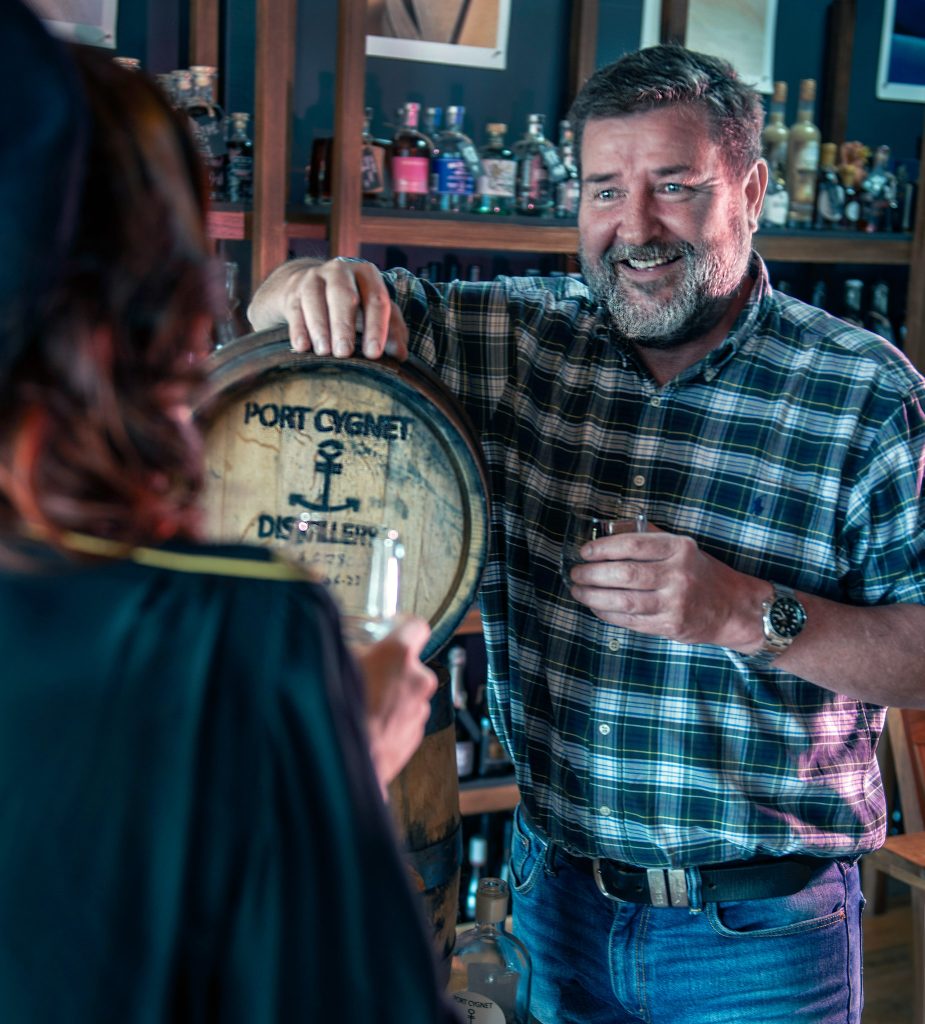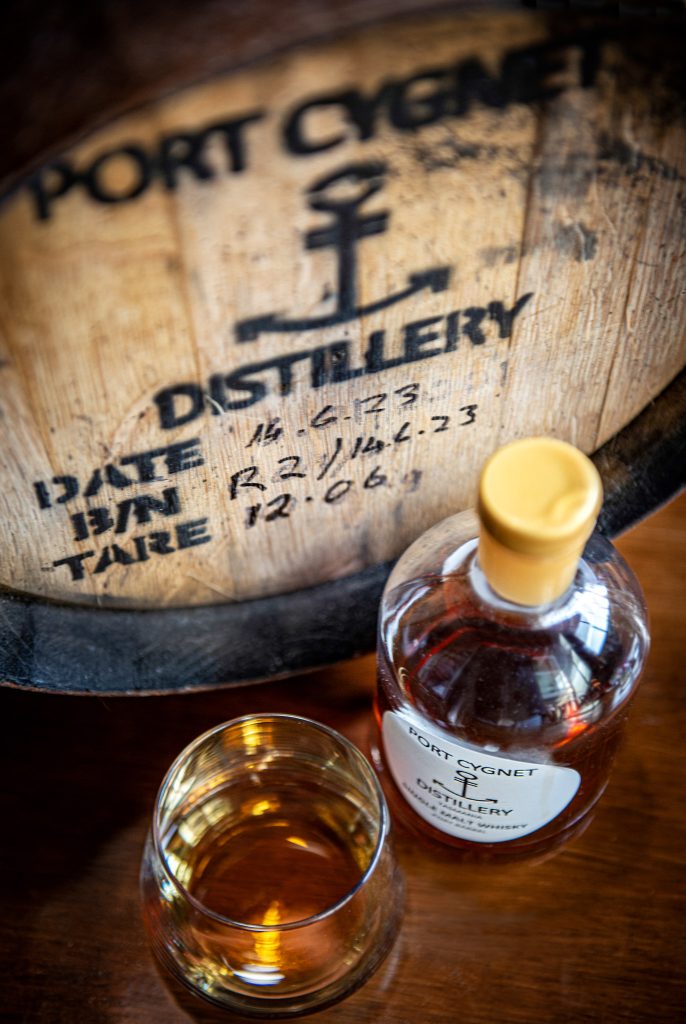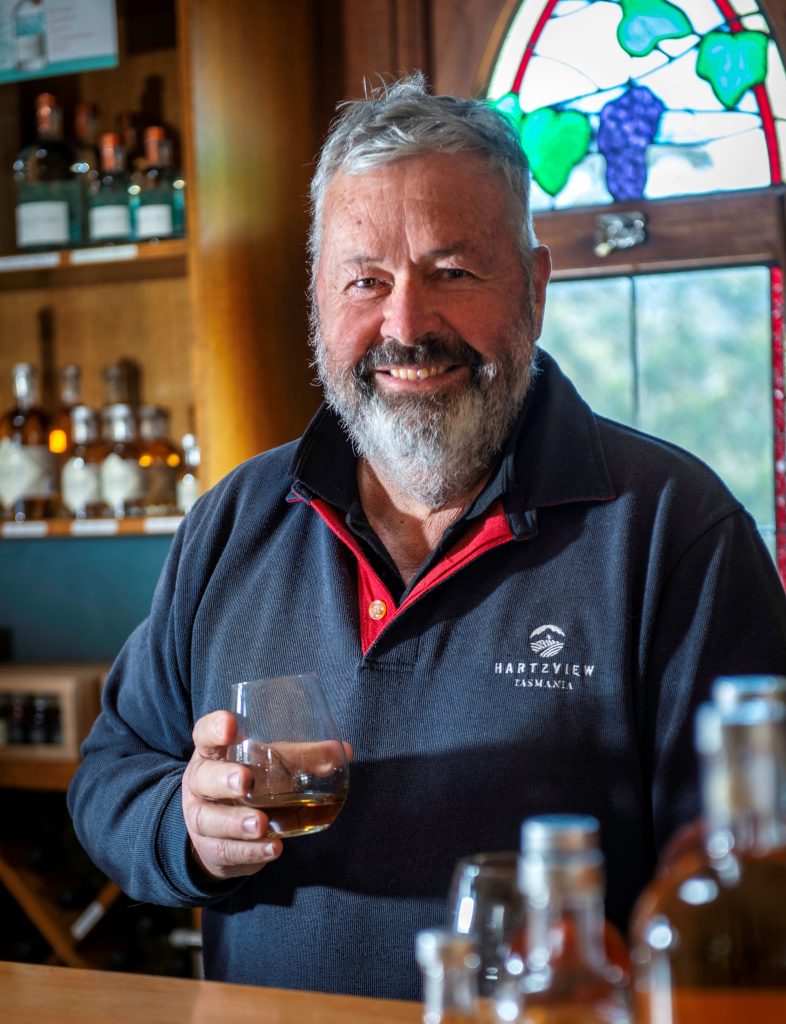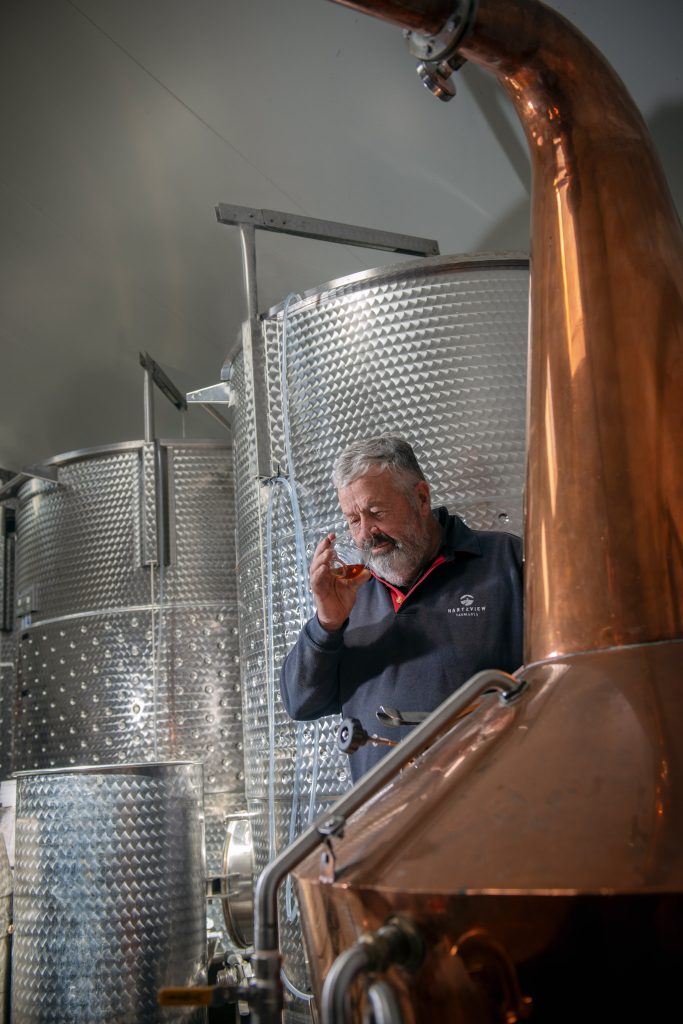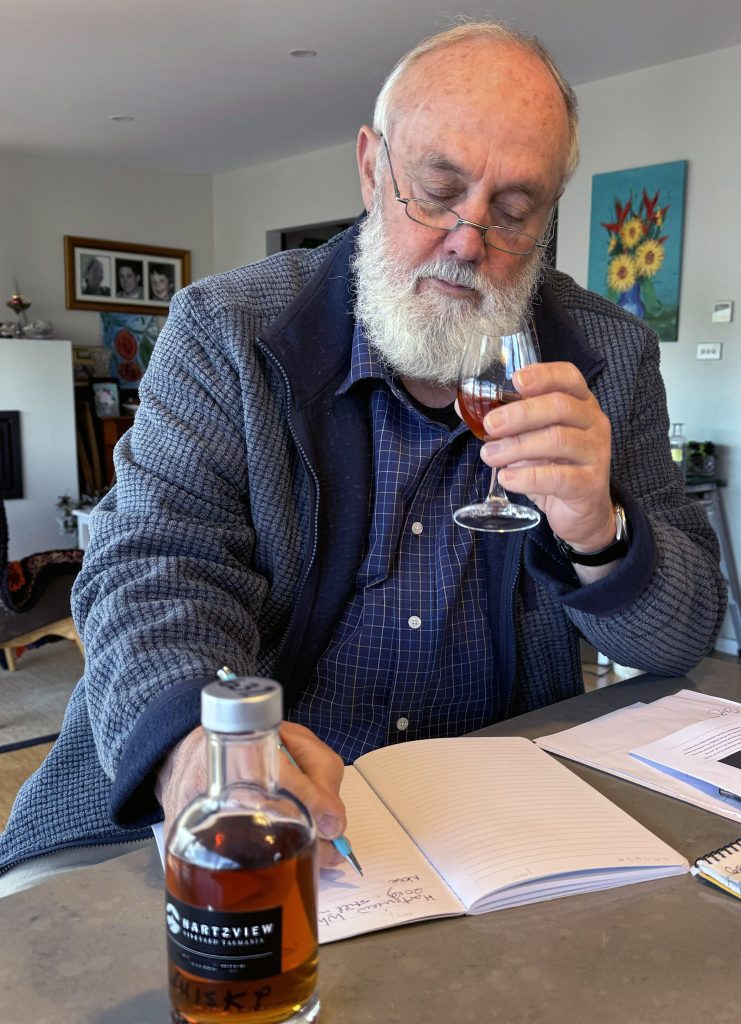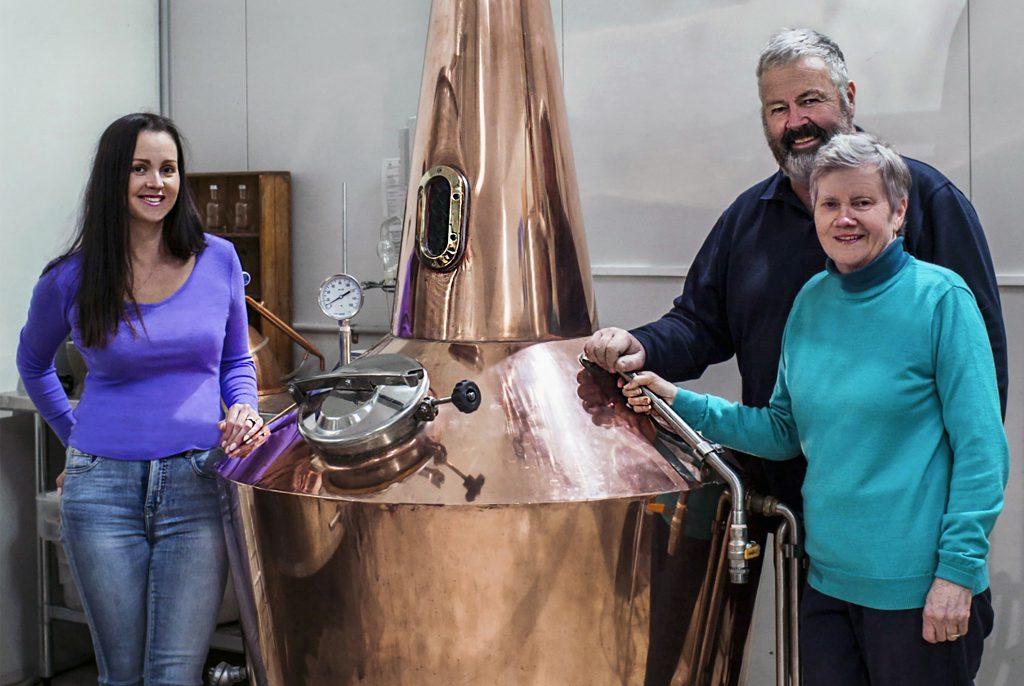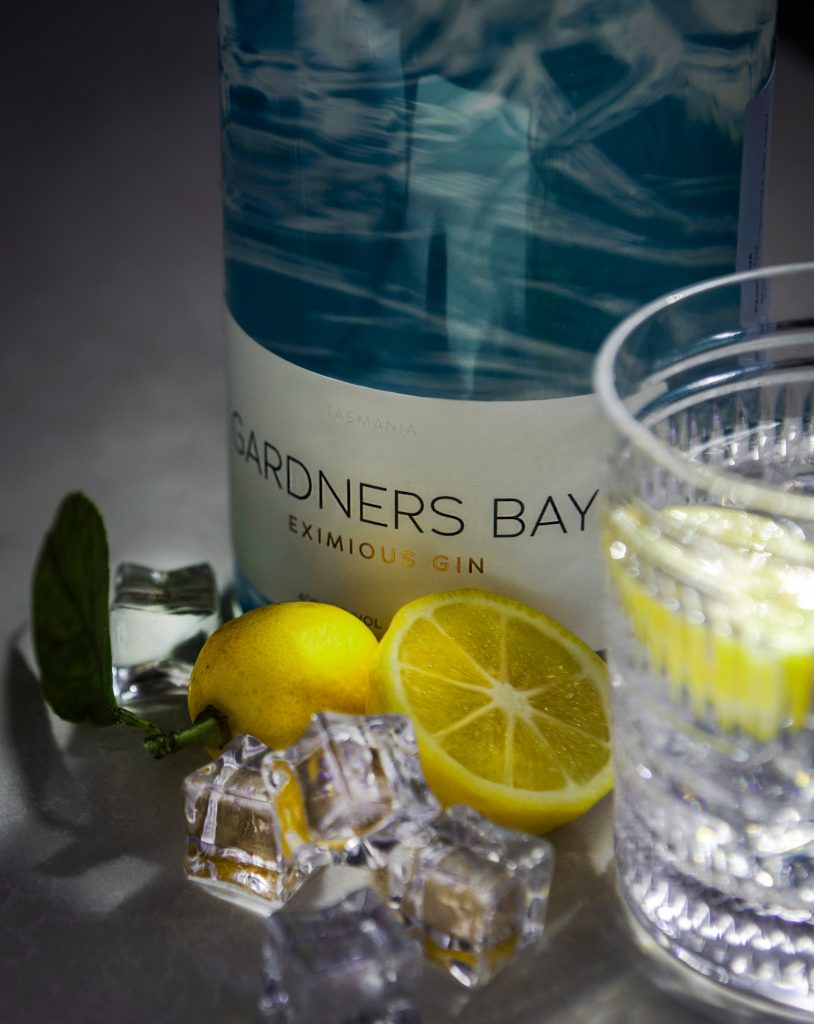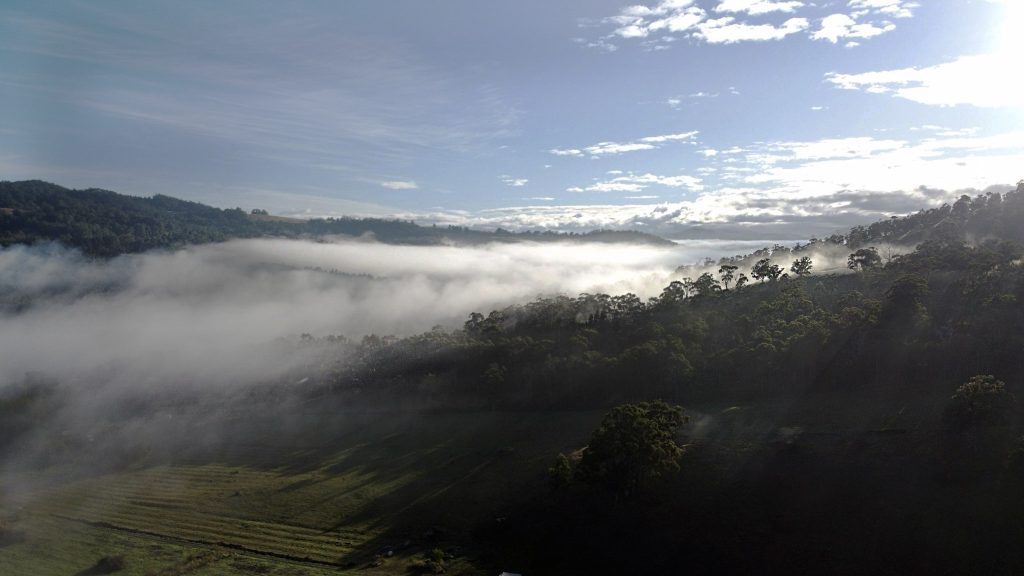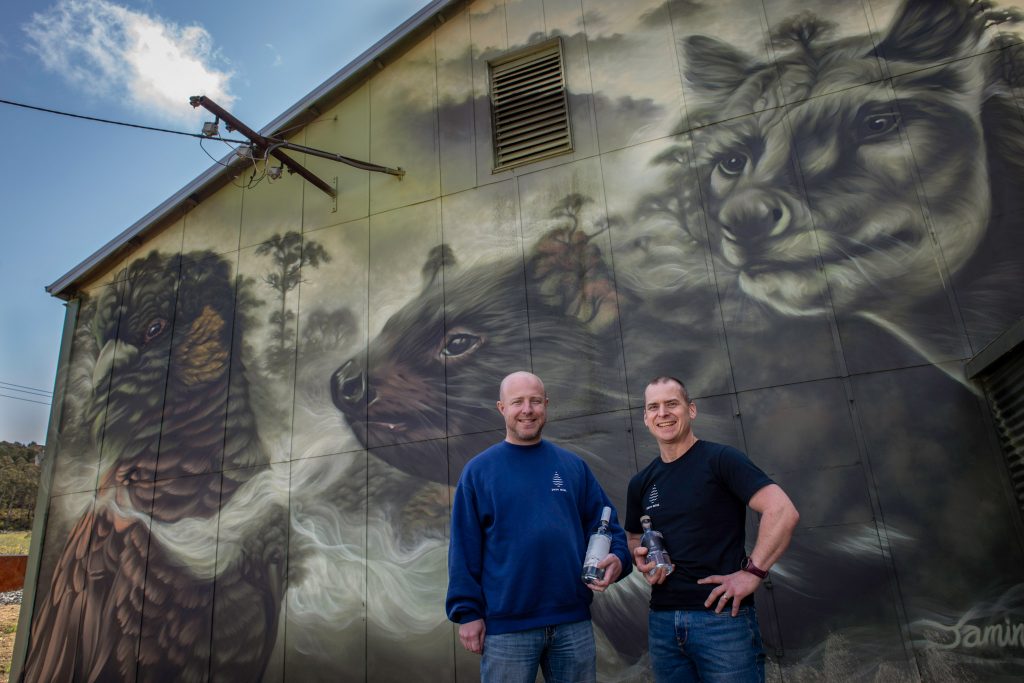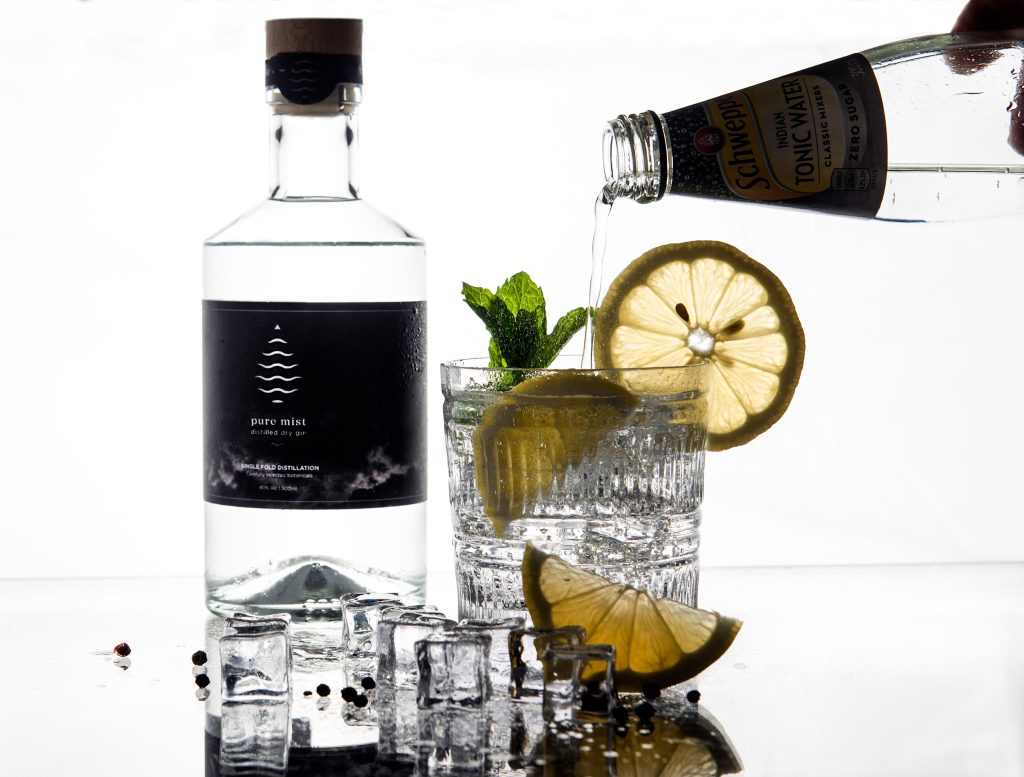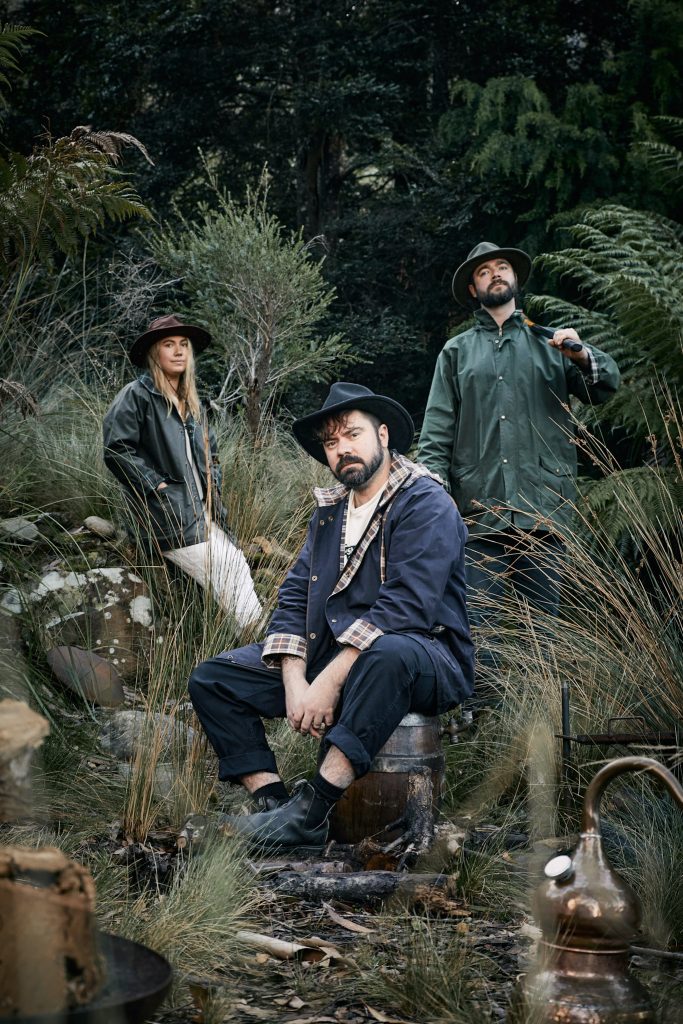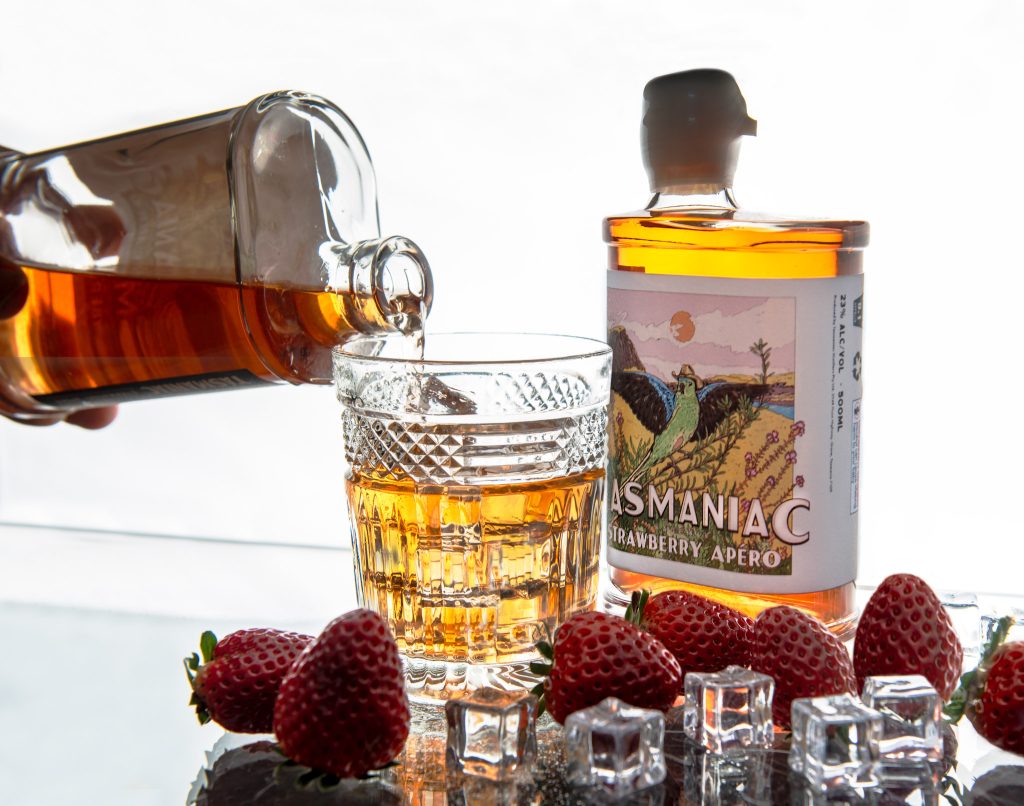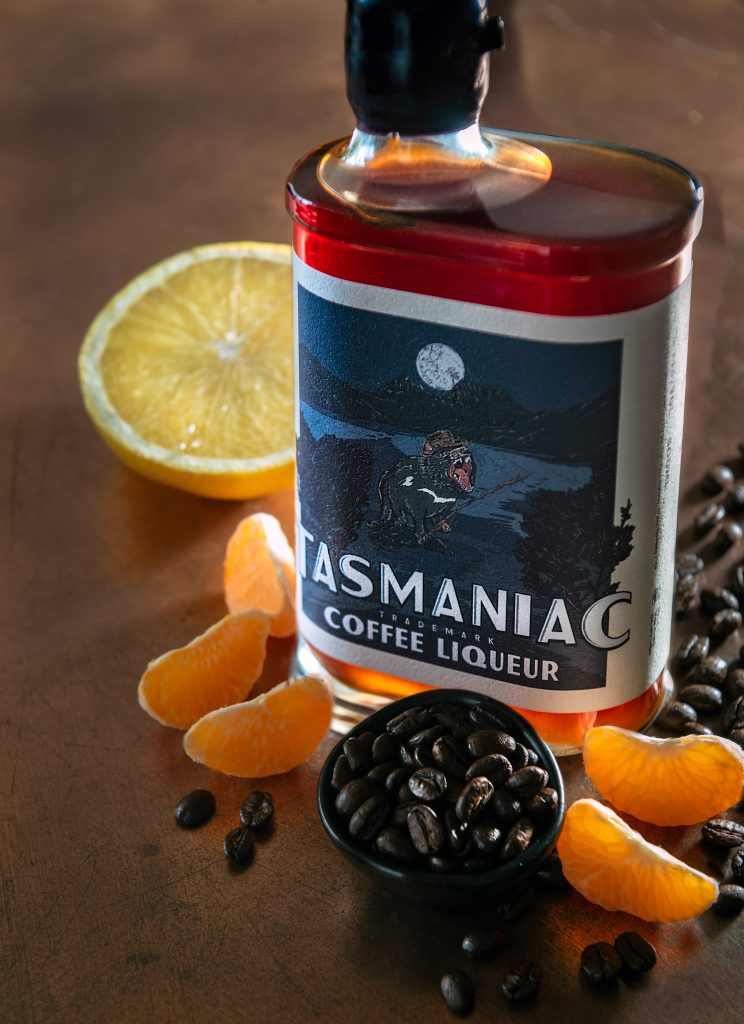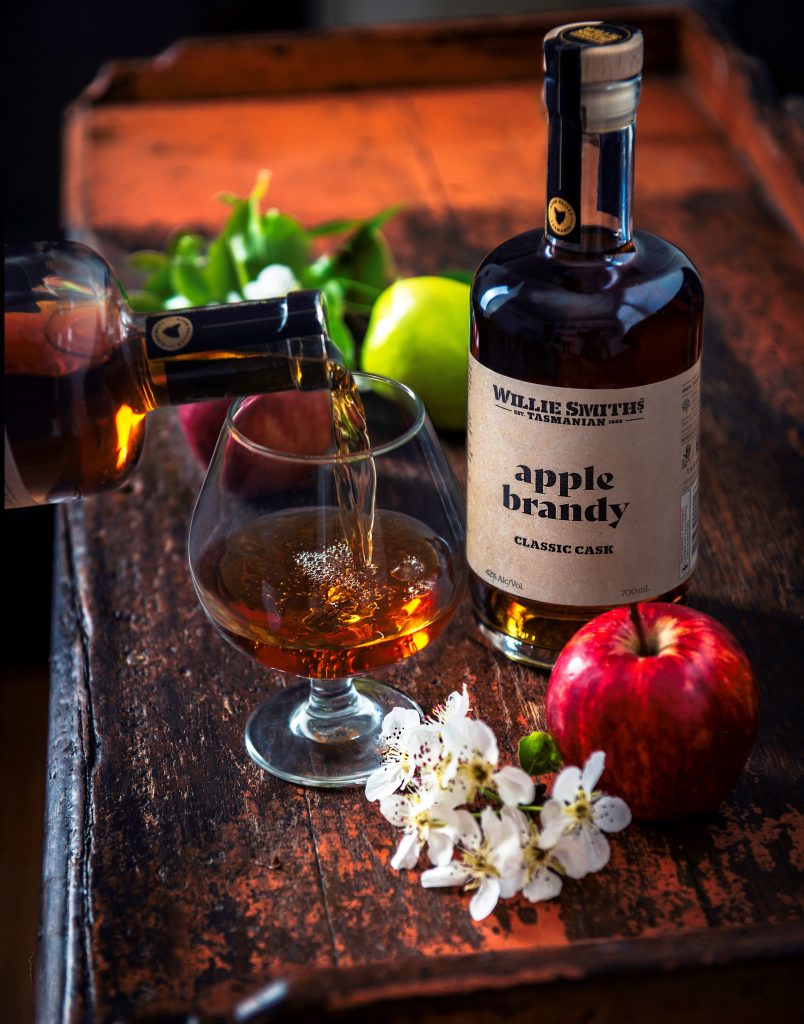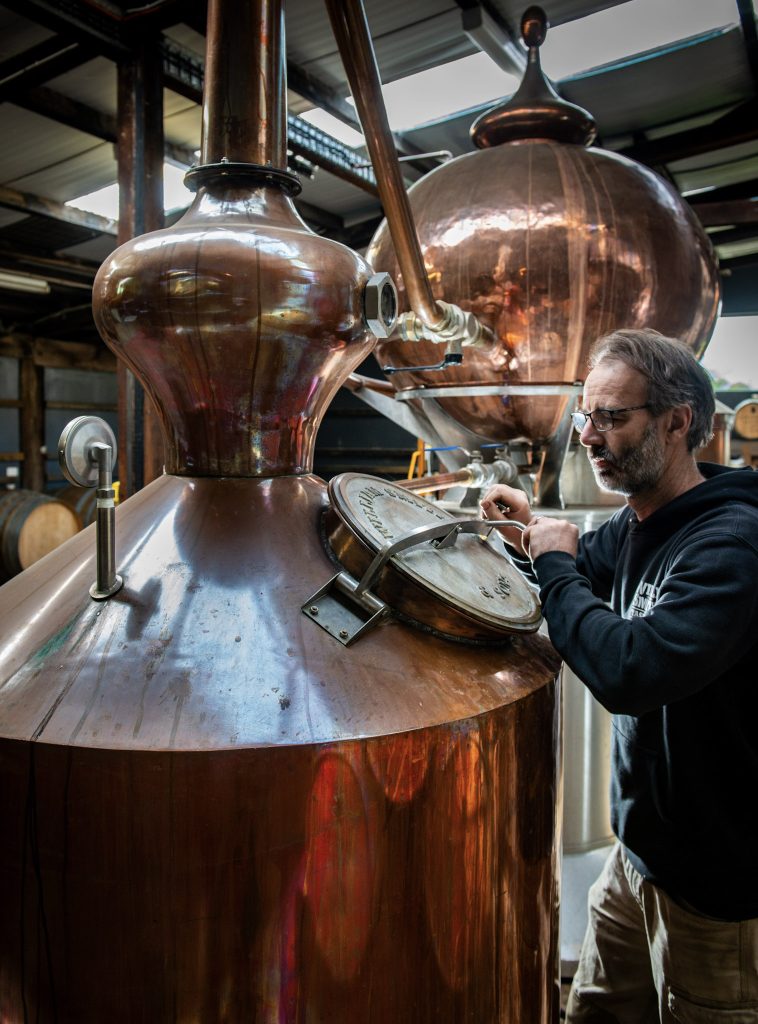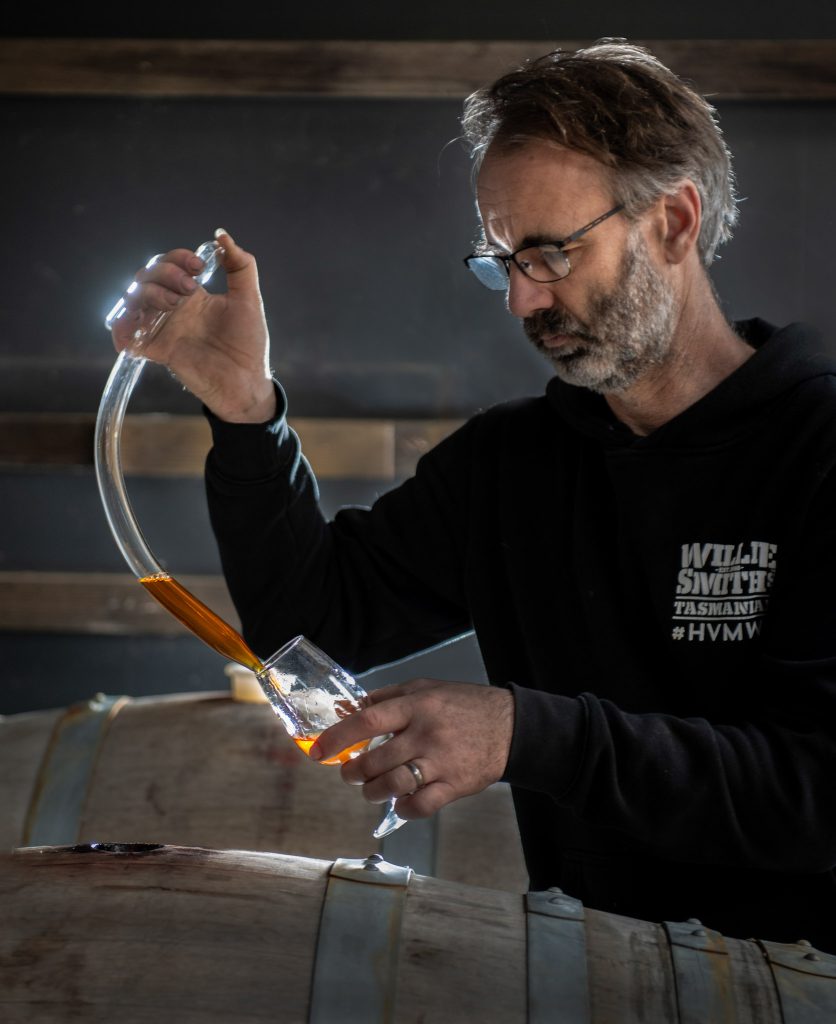What is distinctive about Huon Valley distillers? A key fact is that the region’s distillers are more interested in quality than quantity – and of course the climate, the water and the high standard of the raw ingredients are all crucial for excellence in distillation. One distiller even had the still itself made in the Huon. Now that’s dedication to craft!
It’s not well known, but whisky industry icon Bill Lark’s first choice for a distillery was in Ranelagh on the banks of the Mountain River. Plans were drawn up for the Mountain River Distillery, but investor partners got cold feet and pulled out. So, Bill went elsewhere and in 1992 with wife Lyn received the first Tasmanian distiller’s license granted in 154 years, and with a makeshift still on a kitchen table gave birth to the modern Australian distilling industry. This opened the distilling flood gates and today there are around 80 small distilleries around Tasmania and an ever-growing number in the Huon Valley.
Mountain River Distillery
In a strange twist of fate, the Mountain River Distillery has come to fruition!
Ben Karagiannakis and Stephanie McKellar registered the Mountain River Distillery with no idea of its historical context.
The idea came about a few years ago when Ben’s parents planted blueberries at Mountain River and were trying to decide what to do with the seconds fruit.
‘Why not a blueberry gin?’ Ben’s Mum suggested.
Ben and Stephanie moved to Queensland briefly, then returned in 2021 and registered the Mountain River Distillery name and launched their Telopea gin at the 2023 Ginuary Festival. Telopea is the genus for Tasmanian Waratah. They chose the Telopea name as its unique to Tasmania and they wanted something that reflects the wild beauty of the island.
They are inspired by the variety of botanicals from the Huon Valley and it’s their goal to share this beautiful region with the world, one sip at a time.
Their plan is to build the business slowly, so they only sell their gin at local markets like the Hobart Twilight Market, the Farmgate Market and the Tasmanian Produce Market. They have also launched online and this summer (2023/24) their gin will be available at the Taste festival.
‘We’re close to securing a distillery premises in Cygnet and we’ve made our first 20 litre barrel of whisky,’ Stephanie says.
‘Yes, and now the minimum two-year wait begins,’ Ben laughs.
They also have plans to make a blueberry gin but for now Stephanie’s favourite way to drink their gin is with frozen blueberries and soda – she loves the delicate blush of blueish-pink!
Follow Ben and Stephanie’s journey online by visiting their website at www.mountainriverdistillery.au.
Tas-Saff
Tas-Saff, one of the Huon’s earliest distillers, is on three acres at Glazier’s Bay with stunning vistas south over the Huon River.
Terry and Nicky have been operating Tas-Saff since 1990 and are the first to successfully acclimatise crocus sativus corms (bulbs) to the southern hemisphere conditions in Australia, Tasmanian Saffron (Tas-Saff) are pioneers of the saffron industry. Their saffron is harvested in April and is the world’s most expensive spice, selling for roughly $30,000 a kilo. They sell it through Woolworths and Coles nationally.
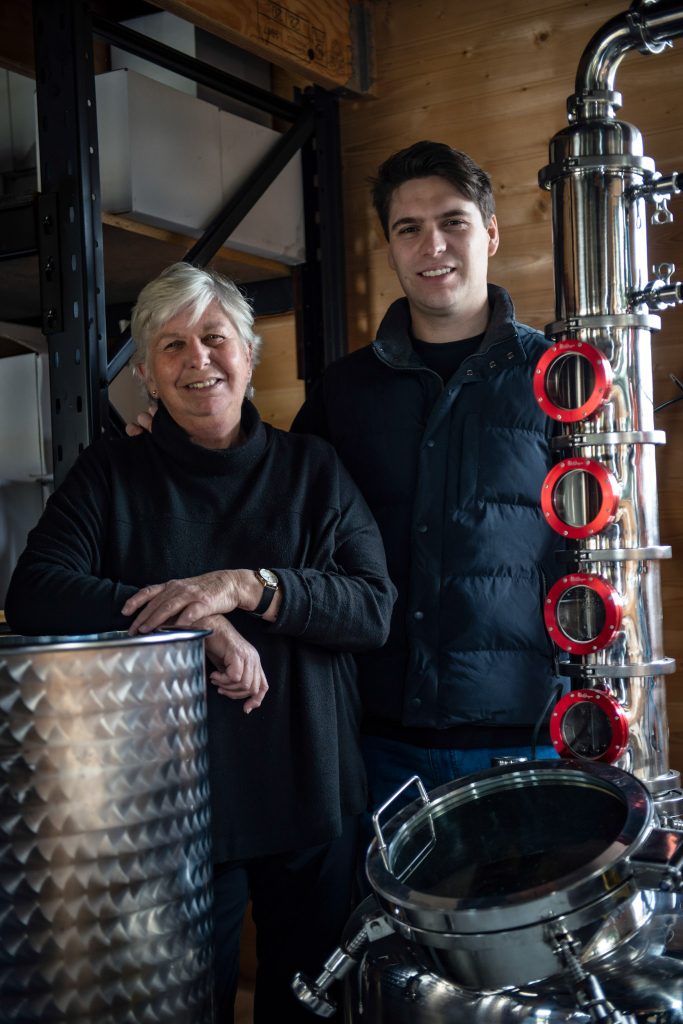
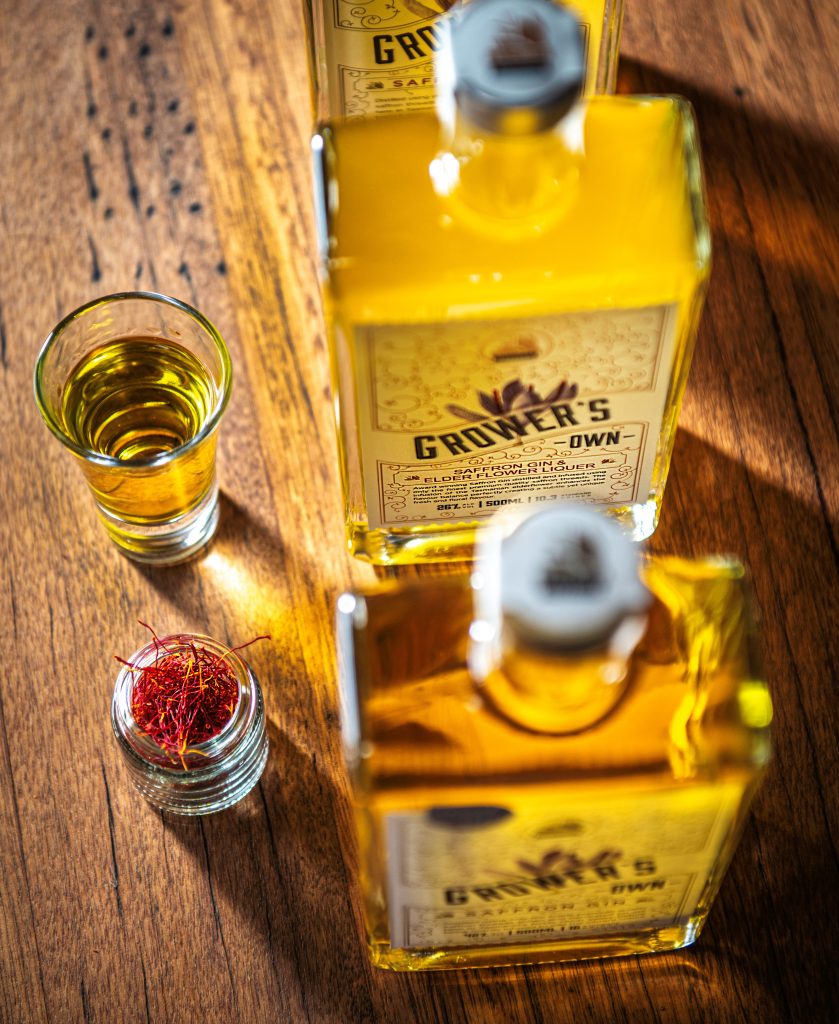
Tas-Saff started making saffron gin because they wanted a product to add to their Salamanca Market stall. In 2016 they brought a small still and under the guidance of son Patrick started producing saffron gin. Patrick manages the production of the spirits. He learnt distilling at Nonesuch Distillery with Rex Burdon and with guidance from Bill Lark.
Their saffron gin won a silver medal in the Australian Gin Awards in 2021. The mouth feel is buttery with plenty of warmth up-front. The saffron lingers on the palate and the nose is balanced with the floral of the saffron working with the juniper.
Patrick says their 100 litre stainless steel dragon column still is perfect for the volume they produce. They sell a lot of their product online and are starting mainland distribution this year.
Using only pure filtered Tasmanian rainwater, their saffron gin, their most popular and well-known product, is infused with saffron and seven other botanicals for two months, giving it that beautiful saffron gold colour.
Their saffron pea flower vodka is infused with butterfly pea flower, which gives it its distinctive mauve colour, not unlike the saffron flower. When tonic water is added it turns a lovely pink. Butterfly pea flower is an ingredient well-known for its brilliant blue hue and is often made into a tea. In recent years, the plant has also been studied for its antioxidant content and health properties. Some studies suggest that butterfly pea flower may help ensure skin and hair health, promote weight loss, and reduce blood sugar levels. The pea flower adds a slight sweetness to the vodka, a light and delightful summer drink.
The production of their latest product saffron gin and elderflower liqueur, commenced in 2023. At only 26% ABV, it makes a spritzer that’s lower in alcohol and the sweetness is nicely contrasted with soda or tonic water.
Drop in to their wonderful cellar door for some delicious tastes.
Ph: 03 6295 1921
Bakehouse Distillery
The Bakehouse Distillery, just off the A6 Highway in Dover, is Australia’s southernmost distillery. It’s here where a unique small-batch, hand-crafted brand of botanical spirit captures the essence of this part of the country.
The distillery owes its name to the current residence and associated out-buildings that have served the region as a bakery since the 1920s.
The distillery is built around a home-business model, with tours, tastings and purchases taking place in a well-established garden setting in the centre of town. Open times are advertised on their website or otherwise by prior appointment. Visits are suited for small groups of generally no more than twelve persons.
Distiller Martin Wohlgemuth has a family history of sawmilling. He has been around timber most of his life and is passionate about the Tasmanian forests and native forest logging. For many years he has been trying to change policy and educate people.
Martin was attracted to the sassafras tree. On bushwalks in the Southwest he would also make sassafras billy tea and pick a few leaves to chew on.
They’d keep your mouth fresh and a little numb
Martin Wohlgemuth
The first ale made by invading colonials used sassafras as the bittering agent. Drinking water was suspect, so they brewed beer which was also often drunk by children.
Martin explains there is a northern and southern hemisphere variety of sassafras, both connected to the laurel family. In North America sassafras was used by the Native Americans for various medicinal cures and as a cooking spice. This was recorded as early as 1577. The Choctaw Indians first used the dried ground leaves as a seasoning and thickener. Martin believes that Tasmanian indigenous people used sassafras as a paste to sterilise external wounds and to treat an upset stomach.
The dried leaf has a citrus aroma. Martin shows me some reduced sassafras oil syrup, which has an almost licoricey aroma. Historically the North American sassafras is connected to sarsaparilla and root beer. Sassafras contains the organic compound safrole. Eighty years ago, tests in America revealed safrole as a mild carcinogen and it was banned. Some years later, this was confirmed by tests at the University of Tasmania. However, Martin recently sent three samples to be tested and no safrole was found. Martin thinks that through the distilling process the safrole is removed but the flavour remains. He explains that nutmeg, cinnamon, anise, pepper all contain safrole in small quantities.
The leaves of the sassafras tree are vapour-distilled to extract the flavours using the handsome copper Alquitar still. Finally, thoughtfully selected local botanicals including pepperberries and the purest rainwater are added to the distilling process to create a truly unique and local taste. Martin says the pepperberries came from the lighthouse on Maatsuyker Island so have a very southern providence!
Martin explains that he uses the traditional method and makes a rye flour and water dough that seals the space where the still base and top meet. Used by the Moors and probably of ancient Chinese origins, Alquitar stills continue to be used frequently on the Iberian Peninsula to make spirits like calvados.
Ph: 0409 981 062
Port Cygnet Distillery
Harry Moses has been a homebrewer since 1983. His interest in distilling grew when he first moved to Tasmania in 2010 and was the co-founder of Pagan Cider in Cygnet.
Harry began the Port Cygnet Distillery in 2017 and it is one of Australia’s smallest, using a 30 litre copper pot still, producing approximately 50 bottles per batch. The first whisky barrels were filled in January 2021 with continued production of new make spirit ever since, although on a very small scale. After two solid years of production, a minor rebuild and upgrade of the distillery was completed in January 2022. Harry hopes to release the whisky in 2025.
Harry says his online spirit club is very popular and sustains his business. He’s a one man show and he hand-delivers his orders. His whole process takes up just 25 square metres, a small footprint that helps keep costs down.
His 88 year-old father is a whisky fanatic and his proudest supporter.
When I told him I was going to be a distiller, strangely I got no resistance at all,’ Harry says with a laugh. ‘Having a son who is a distiller gives him a great excuse to visit distilleries, and at Christmas he’s always keen to see what arrives under the tree.
Harry Moses
I ask Harry how he learned the process and whether he has industry mentors. Harry says he always visits distilleries when he travels and chats with the distillers to glean some knowledge.
He has two gins and a vodka for sale, with a rum and a brandy on the way. The gins are intentionally heavy with botanicals and consequently are rich, smooth, elegant and beautifully-balanced, bringing a luxuriant mouthfeel with delightful aromatics.
Harry says two barrels of his whisky circumnavigated Tasmania on the old ketch Kerrawyn. It was a fundraiser for the boat restoration, and they all sold in special ceramic bottles.
The wooden hull of Kerrawyn was built in 1948/1949 in Cygnet. It was then towed to Dunalley to have the deck put on and a fit-out for the Young family. They owned and crayfished her for more than 30 years before they sold her to Tony Purdon of Strahan, in the early 1980s. The Purdon family used her mostly for shark fishing. In 2014, David and Anastasia became the custodians of Kerrawyn and began the large task of transforming her from fishing boat into the comfortable cruiser which now works the Huon waters today.
The creation of the beautiful and unique ceramic bottles is a Tasmanian first. The bottles are individually hand thrown for the distillery by local Cygnet potter Ian Clare. They are available in limited numbers and can be filled with the spirit of your choosing.
The main objective of the ceramic bottles was to give customers the ability to refill the bottles. This is done by ordering recyclable satchels at a significant lower cost due to the elimination of the cost of another bottle and the savings in freight costs due to weight reduction. The reduction in bottle numbers and weight-related transport costs in addition to labels and closures produces the environmental tick the distillery was seeking.
The distillery is zero-waste, excluding packaging. Cooling water is recycled, spent botanicals are composted, cleaning products are all organic, compostable and used for garden bed preparation and plant watering.
0429 463 870
Hartzview Vineyard
Hartzview’s first vines were planted in 1988 by Rob and Anthea Patterson and is one of the Huon Valleys’ iconic wineries. The 125-acre property at Gardners Bay was purchased by Rob’s late mother June (Audie) Patterson in 1976. Audie gifted a block of land to Rob and Anthea as a wedding gift and they relocated from Sydney to start their new life and family together in Tasmania. In the early 1980s the Hartzview property was still operating as a fruit farm, producing a large percentage of Australia’s gooseberries.
Rob had a keen interest in developing the land further, so he investigated the possibility of planting wine grapes. Hartzview produces cool-climate wines including Tasmania’s largest range of fortified fruit ports, liqueurs and spiced apple liqueur mead. You can sample their excellent products at their cellar door and popular Salamanca Market stall.
They use a 500 litre Peter Bailey copper still. Their 2000 litres of beer wash from White Label in Kingston produces 300 litres of whisky spirit.
White spirits like gin can be made relatively quickly – but whisky takes time. Australian law states that whisky must have been in the barrel for at least two years and must be distilled from the fermented mash of cereal grains. The oak barrel is firstly charred so it has a very thin layer of charcoal which adds to the whisky’s colour and flavour. The main flavour of whisky is derived from breaking down the sugars in the barrel’s wood fibres.
The spirit actually impregnates the barrel and a certain amount called ‘the angel’s share’ evaporates. This is why a whisky bond store has such a wonderfully pungent aroma.
How long is maturation time?
‘It’s not an exact science,’ says whisky icon Bill Lark who says that maturation time depends on many factors including the actual barrel size. Most distillers find that the sweetness peaks from 4½ to 6½ years, depending on ageing conditions, climate and other factors. Beyond this age, oak and tannin influence can begin to overtake sweetness. Longer ageing can certainly be balanced by locating the barrels in cooler parts of the warehouse.
Hartzview’s whisky has been maturing in French ex-sherry barrels for four years and Rob Patterson was nervous about when to release it. This is the art of barrel maturation.
Bill Lark sampled some of the cask strength (63 ABV) product and said it was excellent.
‘It doesn’t have any of the unwanted aldehydes and esters,’ Bill says. ‘The whisky has a beautiful floral and fruit nose, with gentle notes of oak shining through. It has aromas of Turkish delight and rich milk chocolate. The taste was sweet and creamy up-front and rich and velvety on the palate. It handles water very well and opens up delicious fruit and nut characters and is wonderfully complex and luscious.
Bill Lark
The brandy comes from their pinot grapes. In 2019 Rob and Anthea looked anxiously on through watering eyes as day-by-day their precious crop was enveloped by a dense smoke haze from devastating bushfires. The grapes were heavily smoke-tainted and it all looked like a disastrous year. Sadly, tonnes of taint-smoked grapes were discarded that year by many other Huon Valley vineyards.
Through a sense of desperation and exploration, Hartzview distilled the pinot grape juice and were excited to discover that the distilling process removed the smoke taint. Normally that won’t work, because stills hate sulphur, which is added to the grapes to stop fermentation. But cleverly they turned the grape juice into a fortified wine first, without the addition of sulphur. The brandy spirit then went into American Limousine Oak ex-bourbon barrels and is now four years old.
Rob says distillation is a very precise science compared to wine making, which is more dependent on the climate that greatly affects the wine’s character.
Ph: 03 6295 1623
Gardners Bay Distillery
Gardners Bay Distillery is owned by Edwina Cummings, daughter of Rob and Anthea Patterson from the iconic Hartzview Vineyard. Born and bred in the Huon Valley, Edwina grew up picking fruit and grapes and playing in the family’s heritage-listed pickers huts on their property.
‘We grew up with a sense that we all had to contribute to the farm, and if that meant picking gooseberries on Christmas Day because they were ready, that’s what we did’.
Edwina Cummings
Edwina also recognises that the Hartzview property is a very special location, with a long history of orcharding and small-fruits production. Dillons Road, where Hartzview is located, was an old convict-built road to Cygnet (then named Lovett).
The historic pickers’ huts that still stand on the property are full of stories from many years of fruitful harvests. ‘Many families have told me stories about spending summers living in those little huts and working on the farm,’ Edwina says.
Hartzview is a cool-climate wine producer at an altitude of 220 metres and on rare occasions a beautiful white blanket covers the vineyard and huts.
The blocks on the property were named after the three Patterson daughters – Sally Grace, Sandra and Edwina. A love for the land and thoughtfully made product was always a part of their dinner table conversation and Edwina spent her childhood watching her parents making wines, mead, liqueurs and spirits, so it seemed natural she would go into spirit production.
The Eximious gin is a careful small-batch production. Eximious, which translates as rare, select and distinguished, has delicate flavours with a smooth lingering finish resulting from carefully selected botanicals. Edwina distils using purified filtered rain water sourced from the family farm. Eximious gin is a limited first-release.
Gardners Bay Distillery uses purified filtered Tasmanian rainwater to secure premium delicate flavours and a smooth lingering finish. Edwina is committed to making gin the way gin used to be made, in a classic style with a one-shot distillation in a traditional copper pot still. The beautiful still, named Gracie, was built by expert craftsman Peter Bailey in Hobart. Edwina believes copper is essential to the distillation process as the chemical reaction results in a softer and smoother spirit.
Edwina was excited when they won bronze in the London Spirits Competition in 2023. Their landmark first-release gin is now available to the public. Only 318 bottles will ever be available to purchase, so don’t miss out!
www.gardnersbaydistillery.com.au
Ph: 0415 454 050
Pure Mist Distillery
When you can hardly see the car in front of you on the morning school run, you probably think that mist on the Huon River is an annoyance. Not so the Pure Mist company in Geeveston, which is owned by Justin and Jenny Hickey.
Jenny came from Chile in South America, where mist-trapping is not a novelty but a necessity. Peña Blanca, her remote drought-stricken community, lies on the fringes of an expanding Atacama Desert, the driest non-polar desert on Earth. Parts of this parched and desolate land have never seen a single drop of rain. With more than a million people scattered across fishing villages, towns and coastal cities throughout, when it comes to water the resourceful folk of Chile’s north have had to make do with very little. The mist known as the Camanchaca rolls in from the Pacific and each time it sweeps across the desert hills, it spatters strategically-placed nets with microscopic droplets. Each speck is entirely insignificant on its own, but through a cheap, cleverly designed system they pool into tanks for farming, preserving native vegetation and even allowing beer production.
In a similar fashion, the unique mist towers supplying the water for Pure Mist represent a highly-specialised, low-touch approach, carefully capturing droplets of water from the dense winter mist that weaves its way through the valley at Geeveston.
Standing over ten metres tall on both banks of the river, these mist-catching marvels harvest airborne water molecules and gravity-feed them to collection points on the Hickeys’ 28-acre farm. The construction of stacked weave serves to trap and wick moisture into the towers, while the spiralling structure provides a large surface area that funnels water into the basement, then directly to their facility at the foothills on Scotts Road, Geeveston. Then the water is put through a mild filtration process. They have six water capture nets and as quantity increases, they have Council permission to increase that to 27 nets.
Distiller Richard Brough, who has a background in industry and manufacturing, says they make their own wash and distil it to 95 per cent ABV. Then they add their botanicals and run it through their locally-made 100 litre copper pot still, built by Justin’s uncle Gerald Hickey at Castle Forbes Bay.
Richard and Dan Mckenzie, who are the hospitality professionals in the team, are both passionate locals.
Dan says their gin is unique because they take the time to collect the purest water. Made from native Tasmanian pepper berries, sweet citrus and carefully-selected Pure Mist water droplets, the gin has an aromatic and subtle peppery taste, perfectly balanced when served with a twist of lemon or lime, the mist water giving the gin its crisp clean quality.
Justin is the marketing expert and has developed export markets in China, Vietnam, the United Arab Emirates and Saudi Arabia. International interest came when Pure Mist received a gold medal at the Fine Water Society Awards in Greece this year. They received a gold for the sparkling and silver for the still water at the international water awards and the Pure Mist brand received a bronze medal. Dan says that the judges were fascinated by the water-capture method and that it was achieved at the end of the Earth in Tasmania’s pristine Huon Valley.
Jenny and Justin are also developing Hydroplay, a sports drink and other different spirits over time. They may even make an apple schnapps using local Huon apples.
Later they plan for a restaurant function centre overlooking the farm. For now, they will open their tasting centre for summer 2023 beneath a huge stunning mural of native animals by Dr Benjamin Kluss, known as the talented artist Jamin.
Brooke St Pier, 12 Franklin Wharf, Hobart
Tasmaniac Distillery
After years of research and development, along with meticulous attention to bottle designs and artwork, in 2021 Tasmaniac Distillers was born. Distilled and bottled with love by (in their words) ‘a trio of country-living, folk-singing and banjo-strumming mates’, their vision was clear – to capture the essence of the Huon Valley and infuse it into every drop of their products.
Adam Eaton lived in Norway and learnt the spirits trade for six years. He studied distilling at the Reed and Co. Distillery in Bright, Victoria and at Hellfire Distillery on the Tasman Peninsula. Business partners Max Rawicz and Calypso Brown bring other valuable skills.
At Tasmaniac, they wholeheartedly embrace the concept of ‘local’. They handpick the organic apples that form the base of their gin and source ingredients like strawberries and hazelnuts from the local community. Supporting local growers and using locally-grown produce is a cornerstone of their ethos and they are committed to continuing this connection.
Every step of the distilling process, from the creation of each spirit to the filling of bottles, labelling and wax sealing, is done by hand. They are proud to adopt a DIY approach, ensuring meticulous attention to detail and quality craftsmanship. This is an environmentally-friendly brand and Tasmaniac refuses to compromise on their values – they use no plastic and engage in small-batch production, minimising their ecological footprint.
Tasmaniac Distillers offer three products – Trademark gin, strawberry apero and coffee liqueur. The gin is not a classic dry gin as it uses Huon apple, juniper and pepperberry with an aniseed finish from currants. Adam says it makes a great martini similar to pommeau, an alcoholic drink made in north-western France by mixing apple juice with apple brandy. Just add vermouth or simply serve neat over ice.
Adam loves aperitivos and their strawberry apero sits between Aperol and Campari in bitterness and sweetness. Huon strawberries are used to enhance the fruitiness and sweetness. Adam says its best served in the spritz style, with a Tassie sparkling wine or splashed over ice with a dash of soda.
Adam describes the coffee liqueur as unsweetened, like a jaffa on steroids, with grapefruit and orange notes and cold-brew coffee. Adding Huon hazelnuts and cherries gives it texture.
The coffee liqueur has complex flavours and resembles the gentian liqueur, which has elements of bitterness and comes from the gentian root, of which the primary characteristics are a dusty earthiness, dry floral notes, and vegetal character. The gentian flavour gives it the resemblance of an amaro (the Italian word for bitter.) Amaro liqueurs, commonly consumed as an after-dinner digestif, are usually deep tawny brown in colour and flavoured with herbs, spices and other botanicals. Italians love to drink them with coffee or over ice with tonic.
The unusual bottles, which Adam says resemble a flask or jerry, came from Italy and were made for maple syrup. The Tasmaniacs thought they had an interesting character. The labels reflect their musical background and their sense of fun. They take the making of the product very seriously but they want the branding to add a light touch.
The team at Tasmaniacs are eagerly awaiting a new classic 200 litre copper pot still, which will be based in the Huon. What’s down the track? Adam wants to make a southern hemisphere aquavit, the Scandinavian spirit. They are also interested in making a rye or corned based whisky or a perhaps a moonshine.
Ph: 0476 392 390
Willie Smith’s Distillery
Willie Smith’s is one of the first distillers in the Huon Valley. The Smith family have been orchardists in the region since 1888. They make three products in the Willie Smith’s Apple Shed at Grove – a pomme made from apple brandy and fresh apple juice, barrel-aged for three years; a white apple spirit called ‘eau de vie’ (‘water of life’ in French); and a brandy that spends a minimum of two years in 100 litre barrels.
The barrels come from the fortified wine industry and can be 20 to 30 years old. They commence their life at 500 litres and are rebirthed as they age and lose their character. Over time they are re-coopered down to a 220 litre size then again to the 100 litre size. They are then re-toasted or charcoaled and it’s this process that adds colour and flavour to the final product.
Head distiller Simon Sprent says being on the other side of the world from France, where they’ve been making brandy and cognac since the 13th century, means Tasmania and France have little in common. That’s why they call their product an apple brandy rather than calvados, which is the traditional French apple brandy of the Normandy region.
While calvados was the inspiration, their Tassie take on the style makes the local spirit uniquely fruity and delicate, while still rooted in an earthy, rustic profile.
Our Tasmanian terroir, our water, fruit, climate and yeast are all very different from the French style
Simon Sprent
Their 800 litre Alembic-Charentais copper still attracts awe and is a wondrous sight on full display at the Willie Smith’s Apple Shed. Sometimes you can catch the distiller, entranced in the spirit-making process, amidst a steam-filled distillery. This type of still, developed in the Cognac region of France, is acknowledged as the king of fruit-spirit distillation and is the still of choice to make French apple brandy. In addition to its beauty, the Alembic-Charentais still creates a more robust and rich spirit, ideal for Willie Smith’s style of cask maturation. Put through the still twice, the first run (low wines) at 24% are then redistilled to 67% into the final or white spirit.
The distillers at Willie Smith’s love knowing that they are handcrafting their apple spirits every step of the way. Each bottle has apples that they have grown, picked, crushed, fermented, distilled, barrel-aged and bottled, all on-site.
What excites Simon Sprent is that Tasmania is not tied to tradition and is open to inventiveness and experimentation.
‘It’s exciting and rewarding for all the Willie Smith’s team to be working at the beginning of Tasmania’s distilling journey,’ he says.
Ph: 03 6266 4345

